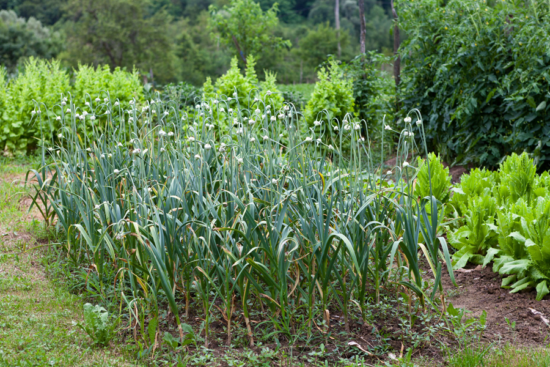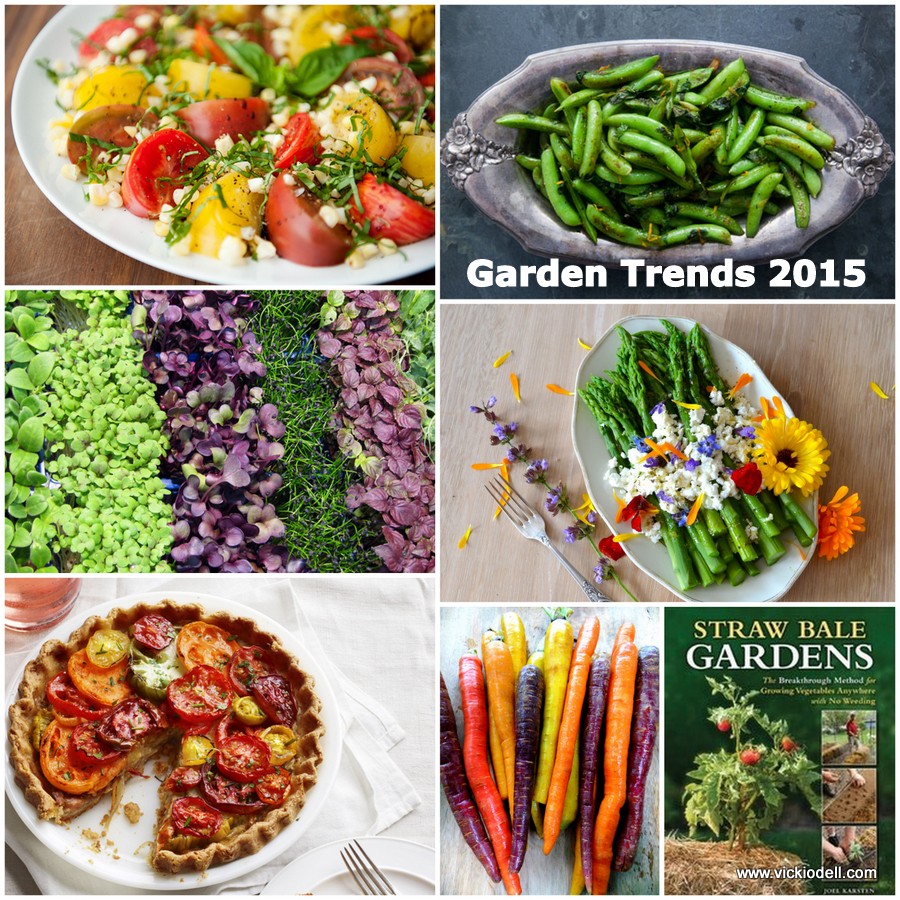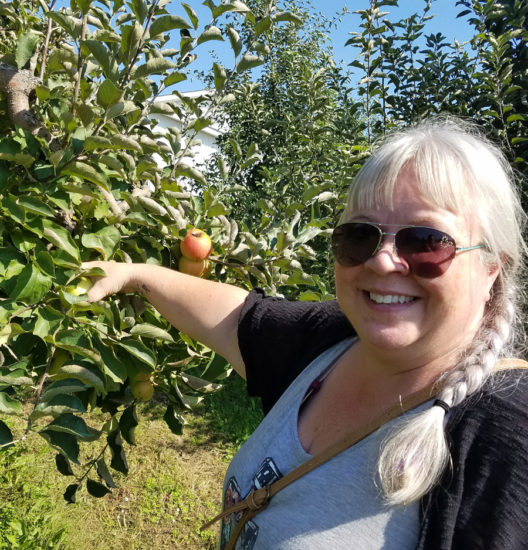I finally plated enough garlic last fall that I could braid it this summer. It’s not a pretty braid by any stretch of the imagination but I’m proud of it all the same.
Garlic is one of those plants that everyone should have on hand. The garlic scapes are fantastic in a stir-fry or roasted with vegetables. The garlic itself is used for many conditions related to the heart and blood system.
It’s also used as a pesticide in organic gardens, a mosquito repellent, weight loss aid, and used to cure athlete’s foot and ear aches. It’s also been used as a splinter or mole remover, skin cleanser, fish bait and cough syrup. Just Google “uses for garlic” and you’ll see that this one plant can help so much around the house – not just as a flavoring for your food.
Here are some other reasons to plant garlic this fall:
It’s super easy to grow. Once you plant and mulch your garlic there’s very little to do until the harvest the following summer. Just keep it weeded (which is easy to do if you mulch it heavily) and watered if it gets dry.
No pests and diseases. In my garden, garlic has always been pest and disease free. There are a few that exist, but they’re not very common in the home garden.
It doesn’t take up much space. You can plant garlic 6” apart on all sides. That means you can fit a lot of garlic in a garden bed.
It stores for a long time. If you grow the right types you can store your garlic fresh in your basement or other cool area for up to a year. It’s so fun to use your own garlic in the kitchen all winter long!
Eat what you grow. If for no other reason, try growing garlic as a gateway to growing more of what you eat. You will know what soil it grew in (no toxic waste dumps in your back yard I hope) and you’ll know what if anything was sprayed on or around it. You will be amazed at how good it feels to grow some of what you eat.
Garlic begins to come up through the soil soon after the ground thaws and bits of greenery begin to be seen in the early season garden. And if you live in a colder climate like I do here in NE Ohio those first little green shoots are quite a mood booster.

Planting Garlic, Growing and Harvesting Garlic
- Garlic can be planted in the spring as soon as the ground can be worked, but fall planting is recommended for most gardeners. In my experience spring planting yields much smaller garlic bulbs. Plant in the fall and you’ll find that your bulbs are bigger and more flavorful when you harvest the next summer.
- Break apart cloves from bulb a few days before planting, but keep the papery husk on each individual clove.
- Plant cloves about one month before the ground freezes.
- Do not plant cloves from the grocery store. Instead, get cloves from a mail order seed company or a local nursery. I recommend Filaree Garlic Farm.
- Ensure soil is well-drained with plenty of organic matter. Select a sunny spot.
- Place cloves 4-6 inches apart and 2 inches deep, in their upright position (the wide root side facing down and pointed end facing up).
- In the spring, as warmer temperatures come, shoots will emerge through the ground.
- When the scapes grow you will want to cut them off to promote bigger garlic bulbs. Don’t toss the scapes, they are good to eat too.
- Northern gardeners should mulch heavily.
- Weeds should not be a problem until the spring. Weed as needed.
- Garlic requires adequate levels of nitrogen. Fertilize accordingly, especially if you see yellowing leaves.
- Water every 3 to 5 days during the growing season (mid-May through June).
- Harvest time depends on when you plant, but the clue is to look for yellow tops. Harvest when the tops begin to yellow and fall over, before they are completely dry.
- In Northern climates, harvesting will probably be in late July or August.
- Check the bulb size and wrapper quality; you don’t want the wrapper to disintegrate. Dig too early and the bulb will be immature.
- Discontinue watering.
- To harvest, carefully lift the bulbs with a spade or garden fork. Pull the plants, carefully brush off the soil, and let them cure in an airy, shady spot for two weeks. We hang them upside down on a string in bunches of 4 to 6. Make sure all sides get good air circulation.
- The bulbs are cured and ready to store when the wrappers are dry and papery and the roots are dry. The root crown should be hard, and the cloves can be cracked apart easily.
- Once the garlic bulbs are dry, you can store them. Remove any dirt and trim off any roots or leaves. Keep the wrappers on—but remove the dirtiest wrappers.
- Garlic bulbs may be stored individually with the tops removed, or the dried tops may be braided together to make a garlic braid to hang in the kitchen or storage room.
- Bulbs should be stored in a cool (40 degrees F), dark, dry place, and can be kept in the same way for several months. Don’t store in your basement if it’s moist!
- The flavor will increase as the bulbs are dried.
- If you plan on planting garlic again next season, save some of your largest, best-formed bulbs to plant again in the fall.
Now, get out there and plant garlic!


